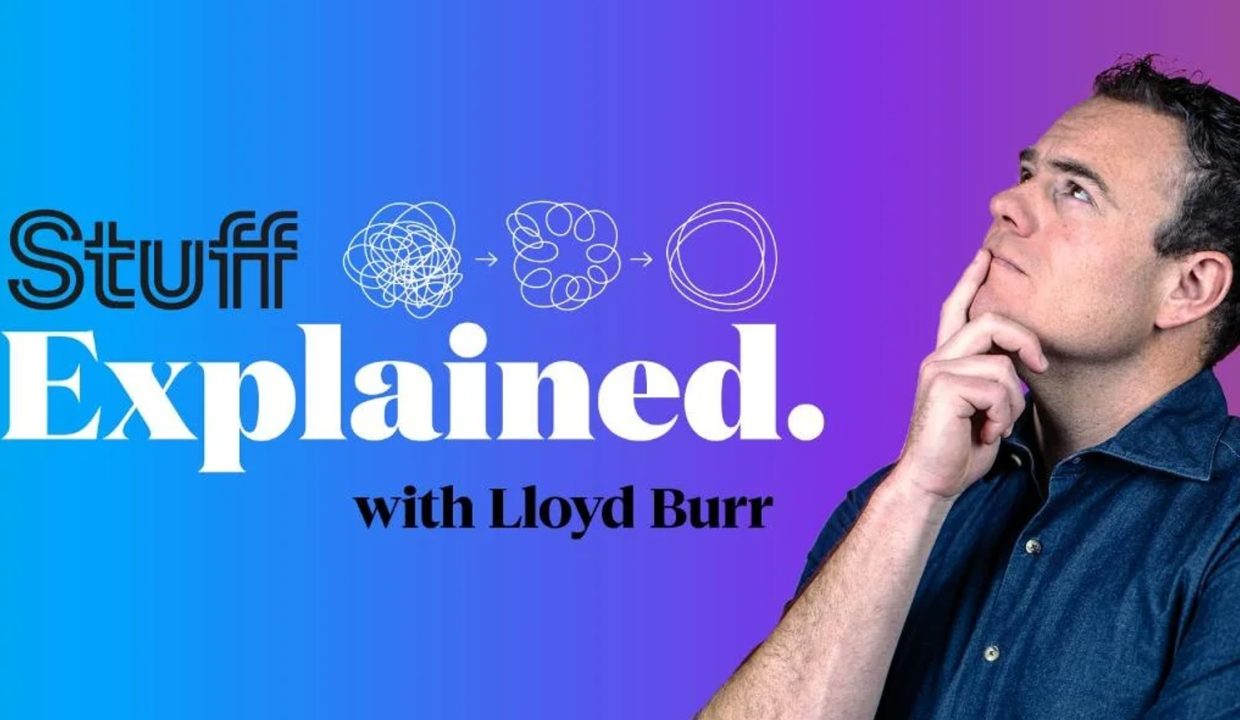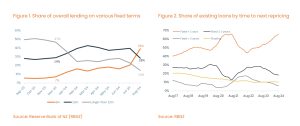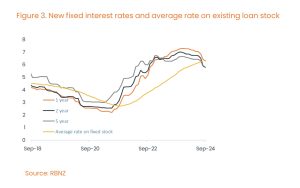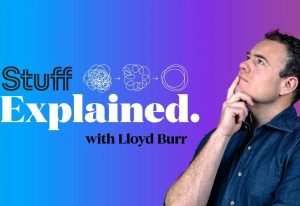
대출자들의 어려운 주택담보대출 결정, 계속될 가능성 높아
Difficult mortgage decisions for borrowers likely to continue

‘By Kelvin Davidson, CoreLogic NZ Chief Property Economist’
The ‘perfect’ strategy for fixing mortgage rates through time is only ever known in hindsight, however new data points to a strong preference for short-term loans. At a macro level this means any reduction in rates will flow through to balance sheets quickly, but with the labour market weakening there are clear ‘tail risks’ to watch for in terms of rising loan repayment problems.
As it’s become clear in recent months that the medium-term outlook is for fairly steady declines in the official cash rate and mortgage interest rates, there’s been a strong preference for borrowers to take out short-term fixed loans. In December last year, for example, 36% of new loans (by value) were taken out for a fixed term of up to 12 months. But that had spiked to 56% by February and reached a new record high of 68% in August – driven by an especially large surge in six-month activity, off the back of that first OCR cut. That spike is shown in Figure 1.
Our analysis suggests that existing borrowers who are rolling over their loans onto a new fixed rate will have been behaving in a very similar way to new borrowers, and indeed the Reserve Bank’s figures show that the share of existing loans that are currently fixed but due to change mortgage rates (‘reprice’) within the next 12 months has now risen back to around 66% – matching a peak previously seen in the first half of 2021, as shown in figure 2. Some of that stock growth will have also come from all of those recent new borrowers who have been fixing short too.
In hindsight, it might not have been the best decision for borrowers – in aggregate – to fix for such short periods back in mid-2021 (unless they wanted loan flexibility for lump sum repayments, as an example). Indeed, anybody who bucked the trend and took out a five-year rate of around 3% at that time will still have about 18 months to run at those ultra-low rates. On the other hand, one can understand why borrowers are now choosing to take shorter fixed periods in the hope they will benefit from a series of loan renewals in the coming year or two at ever-lower rates.

On that note, the one-year change in the average ‘special’ (high equity) one-year fixed mortgage rate, for example, has recently turned negative for the first time since mid-2021; i.e. people currently rolling off a one-year rate from October 2023 will be seeing their costs fall. Some of the currently available market interest rates have recently dropped below the average rate prevailing across the stock of existing fixed loans for the first time in about three years too. This is shown in Figure 3.
Of course, much like it wasn’t necessarily an easy decision to decide on the ‘best’ fixed rate back in mid-2021 (although it’s clearer in hindsight what should have happened), it’s not necessarily straight-forward now either. After all, the very short-term rates (e.g. six months fixed at 6.7%) remain quite a bit higher than the slightly longer terms (e.g. 12 months fixed at 6.2%) – so for the strategy of taking two consecutive six-month fixes to pay off (i.e. to get the lowest average rate over the relevant term), that rate basically needs to drop to 5.7% or less by April next year.
Could that happen? Nothing’s out of the question, especially given the continued weakness of the economy and an emerging risk that inflation falls much more sharply than has been anticipated; which would likely see the OCR also fall more rapidly, alongside extra downward pressure on mortgage rates. But at the same time, there could also be a sense at the moment that some of the potential future falls in the OCR have already been captured (‘priced in’) by current mortgage rates, meaning that the scope for more declines from here, regardless of the fixed term, could be a bit slower/smaller than what we’ve seen to date. Either way, the delicate decisions currently faced by mortgage borrowers may continue for a while yet.
In addition, even though interest rates are now falling, it doesn’t necessarily mean we’ve passed the worst for financial stress amongst mortgage borrowers. Indeed, the non-performing loans ratio (loans that are at least 90 days in arrears or regarded as impaired) on banks’ books has recently edged up to around 0.6% of existing mortgages, the highest figure in more than a decade. It was close to double that figure in 2009-10, however, these numbers are surely still a concern – and could continue to rise, given the job losses that we’re now seeing.
Based on RBNZ figures, the trading banks themselves recently seem to have been raising provisions for possible future ‘bad’ housing loans, to the point where these allowances are now about 40% above even the largest COVID-era figure. Mortgage stress will remain a factor to watch for some time to come yet and is another reason to be cautious about the size and strength of any upturn in house sales and prices as we head into 2025.


대출자들의 어려운 주택담보대출 결정, 계속될 가능성 높아
‘켈빈 데이비슨, 코어로직 NZ 수석 부동산 경제학자’
최근 발표된 데이터에 따르면, 대출자들은 단기 고정 금리에 대한 선호를 강하게 나타내고 있으며, 이는 과거의 경험에서 가장 적합한 전략이 늦게 알려지는 점을 고려할 때 주목할 만한 경향이다.
거시 경제적 측면에서 금리 인하가 대차대조표에 빠르게 반영될 것으로 예상되는 가운데, 노동 시장의 약화로 인해 대출 상환 문제 증가에 대한 우려가 커지고 있다.
지난 몇 개월 동안 공식 현금 금리와 주택담보대출 금리가 비교적 안정적으로 하락할 것이라는 전망이 확실시 됨에 따라, 대출자들은 단기 고정 대출을 선호하는 추세를 보이고 있다. 지난해 12월 신규 대출의 36%가 12개월 이하의 단기고정을 선택했으며, 올해 2월에는 56%, 8월에는 68%로 증가했다. 이는 특히 첫 금리 인하 이후 6개월 고정 대출의 급증에 기인한 것으로 분석된다.
또한, 기존 대출자들이 새로운 고정 금리로 대출을 갱신하는 방식이 신규 대출자들과 유사한 행동 양상을 보이고 있으며, 현재 고정금리로 설정된 대출 중 12개월 이내에 금리가 변경될 예정인 비율은 66%에 달해 2021년 상반기와 유사한 수준에 이르고 있다. 이러한 추세는 최근 단기 고정 대출을 선택한 신규 대출자들로부터 기인하고 있다.
2021년 중반에 대출자들이 짧은 기간의 고정 대출을 선택한 것이 최선의 결정이었는지에 대한 의문이 제기되고 있다. 당시 3%의 5년 고정 금리를 선택한 대출자는 여전히 약 18개월 동안 초저금리를 유지할 수 있다. 반면, 대출자들이 짧은 고정 기간을 선택하는 이유는 향후 1~2년 동안 금리가 계속 하락할 것이라는 기대에서 비롯된 것으로 보인다.
특히 최근 1년간 평균 ‘특별’ 1년 고정 주택담보대출 금리가 처음으로 마이너스를 기록하며, 2023년 10월에 1년 고정 금리를 갱신하는 대출자들은 비용 절감 효과를 보고 있는 상황이다. 시장에서 이용 가능한 금리가 최근 3년 만에 기존 고정 대출의 평균 금리 아래로 떨어진 것도 이러한 맥락에서 이해될 수 있다.
현재 주택담보대출 금리가 이미 향후 금리 인하를 반영하고 있다는 인식이 있는 만큼, 금리 하락폭은 제한적일 것으로 보인다. 경제의 지속적인 약화와 인플레이션의 급격한 하락 위험이 제기됨에 따라 금리가 더 빠르게 하락할 가능성도 존재하지만, 대출자들이 현재 직면하고 있는 복잡한 결정들은 당분간 지속될 전망이다.
한편, 비록 금리가 하락하고 있지만, 이는 주택담보대출자들의 재정적 스트레스가 완화되었음을 의미하지 않는다. 최근 은행의 부실대출 비율이 기존 주택담보대출의 약 0.6%로 10년 만에 가장 높은 수치를 기록했으며, 이는 2009-10년의 두 배에 가까운 수치로, 현재의 실업률 증가를 고려할 때 우려를 낳고 있다.
RBNZ의 자료에 따르면, 거래 은행들은 최근 미래의 부실 주택대출에 대한 충당금을 늘려왔으며, 이 허용액은 COVID 시대의 최대 수치보다 40% 이상 증가한 상태이다. 따라서 주택담보대출자들의 스트레스는 앞으로도 중요한 관찰 요소가 될 것이며, 2025년을 향해 가면서 주택 판매 및 가격 상승에 대한 신중한 접근이 필요할 것으로 보인다.
